My Succulent Collection Needs Expert Advice
J Carter Gainesville, FL 9A
8 years ago
last modified: 8 years ago
Featured Answer
Sort by:Oldest
Comments (15)
Ben was 10a/26, now 7a/34
8 years agolast modified: 8 years agoJ Carter Gainesville, FL 9A
8 years agoRelated Discussions
Please help me ID some succulents in my collection? Thanks!
Comments (7)Yes, Welcome to the forum. Those are quite a few to go through for ID. Just have a few minutes jumping in & out of the forum, so quick thoughts on some. 2. Does look like Haworthia cuspidata. 4. A. Is Aloe variegata on the right track with Haworthia pumila for 5. A & B. C. has been see listed by a couple of cultivar names, one being H. attenuata 'Wide Band' or 'Wide Zebra'. Nice Gloxinia! Just so you know, when writing plant names, single quotes are used on cultivar names. Species names are not capitalized. Common names or nicknames can use double quotes (but are not necessary). I believe all Bryophyllum have been moved back into Kalanchoe now. Cute pups, all! The Gasteria & Sans would require lengthy research. Sorry, I've no time for that now. Maybe I'll get back....See MoreNeed advice for my succulents.
Comments (10)Fannv -- Welcome to the world of Cacti and Succulent growing.. There is alot to read here and in the beginning, information might be overwhelming. Take some time to answer some questions, and read through these links that might help you to your quest. 1) What is your region/zone? 2) Does your pots have holes? 3) Do you grow them indoors? Windows? Which direction the window is facing? http://saveyoursucculents.tumblr.com/post/109107889346/id-intended-to-put-a-bit-more-polish-on-this-but http://saveyoursucculents.tumblr.com/tagged/beginner I've recently also written on another newbie's post on the soil to use. You can read more here... http://forums.gardenweb.com/discussions/3532899/two-ids?n=72 Off the bat, regular garden soil are not fine in the long run, and until you can amend and change the mix, it's best you not water them and make sure the soil is completely dry before you add any more moisture. The first 2 plants looks like a Sedum or Sedeveria of some sort.. The last plant I think is a gasteraloe.. All of them need very well draining soil.....See MoreBLANK Canvas need expert advice before my company arrives ;)
Comments (7)it is very hard without better measurements. I would have the couch face the window and then have the 2 chairs either face each or other or be on one side or the other. Remember there does not need to be a lot of space between couch and chairs or table. the desk is up to you my first thought was to place on the wall? small rugs perhaps?...See MoreCheck out my channel about my succulent collection and vlog
Comments (0)I am here to help if anyone needs it or if you'd like to share ideas that would also be great for all of us! thank you and I hope you visit my channel. Check out my channel about my succulent collection and vlog. https://www.youtube.com/user/asulikeit22...See Morepenfold2
8 years agolast modified: 8 years agoBen was 10a/26, now 7a/34
8 years agolast modified: 8 years agopenfold2
8 years agoBen was 10a/26, now 7a/34
8 years agolast modified: 8 years agoBen was 10a/26, now 7a/34
8 years agoBen was 10a/26, now 7a/34
8 years agoJ Carter Gainesville, FL 9A
8 years agodeva33 Z8 Atlanta
8 years agorina_Ontario,Canada 5a
8 years agodeva33 Z8 Atlanta
8 years agolast modified: 8 years agobreathnez
8 years agopenfold2
8 years ago
Related Stories

WINTER GARDENINGPruning Secrets for Exquisite Roses
Encourage gorgeous blooms year after year with this time-tested advice on how to prune your rosebush in winter for health and shape
Full Story
LIGHTINGExpert Lighting Design Secrets
A professional designer turns us on to the 10 most important things to know when lighting rooms and art
Full Story
DECORATING GUIDESAsk an Expert: How to Decorate a Small Spare Room
It can be difficult to know what to do with that tiny extra room. These design pros offer suggestions
Full Story
REMODELING GUIDESContractor Tips: Advice for Laundry Room Design
Thinking ahead when installing or moving a washer and dryer can prevent frustration and damage down the road
Full Story
DECORATING GUIDESExpert Talk: Designers Open Up About Closet Doors
Closet doors are often an afterthought, but these pros show how they can enrich a home's interior design
Full Story
TASTEMAKERSAsk an Expert: What Is the One Design Rule You Live By?
Eight home experts share their top design rules
Full Story
LIFEGet the Family to Pitch In: A Mom’s Advice on Chores
Foster teamwork and a sense of ownership about housekeeping to lighten your load and even boost togetherness
Full Story
MOST POPULARPros and Cons of 5 Popular Kitchen Flooring Materials
Which kitchen flooring is right for you? An expert gives us the rundown
Full Story
DECORATING GUIDESAsk an Expert: How to Decorate a Long, Narrow Room
Distract attention away from an awkward room shape and create a pleasing design using these pro tips
Full Story
CONTAINER GARDENS3 Steps to Creating Quick, Easy and Colorful Succulent Containers
Take a bright container, add a colorful succulent or two and have a professional, summery design in minutes
Full StorySponsored



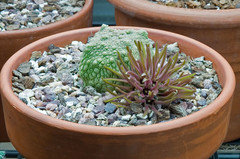
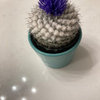

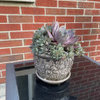
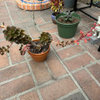
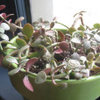
J Carter Gainesville, FL 9AOriginal Author